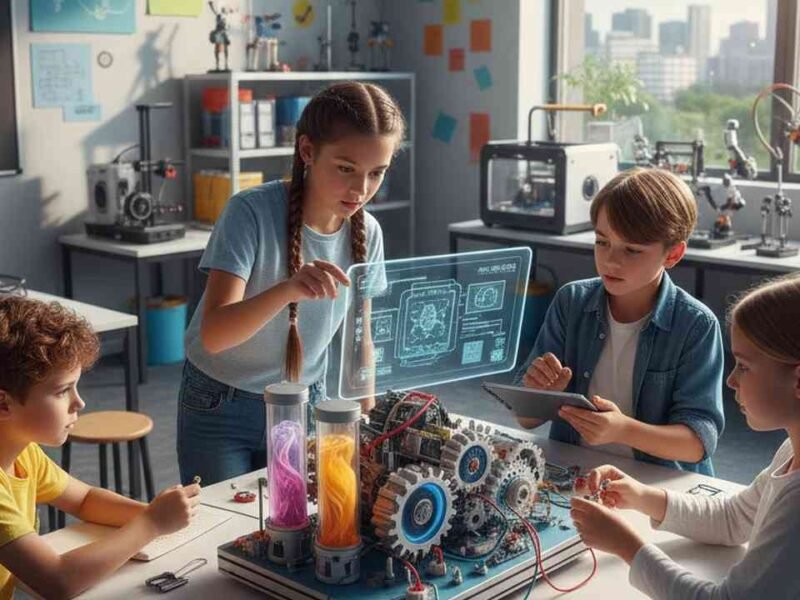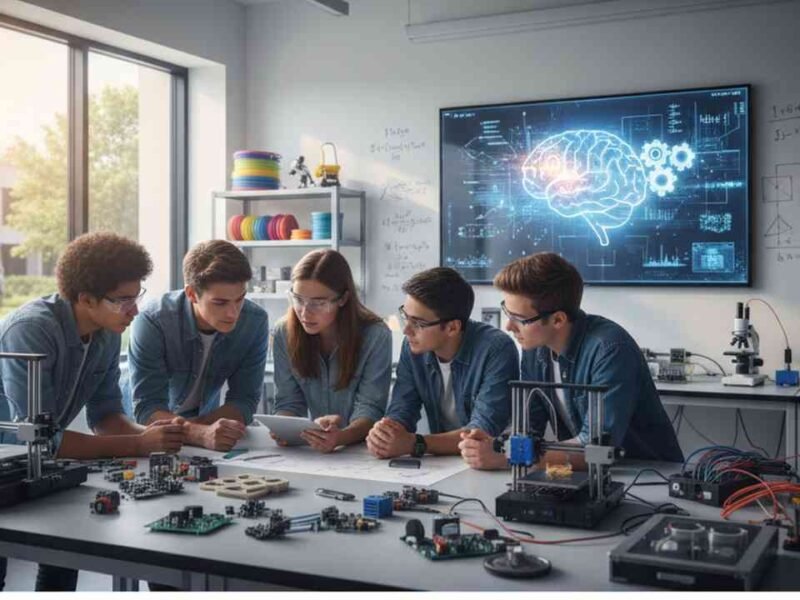In today’s rapidly evolving world, where innovation is the currency of success, the ability to think analytically and critically has become more than just a skill – it is a necessity. Yet, traditional education systems often fall short in cultivating these essential abilities. Enter interactive STEM challenges – a dynamic approach that transforms passive learning into an engaging, hands-on experience. These challenges not only captivate the imagination but also sharpen the mind, preparing students to navigate complex problems with confidence and creativity. If you’re not incorporating these into your educational strategy, you’re missing out on a transformative opportunity.
The Power of Interactive Learning in STEM Education
Interactive learning is a pedagogical approach that emphasizes active student participation, fostering a deeper understanding of concepts through engagement and collaboration. In the realm of STEM (Science, Technology, Engineering, and Mathematics), this method proves particularly effective. By immersing students in real-world problems and encouraging them to devise solutions, interactive STEM challenges stimulate critical thinking and analytical skills. These activities require students to apply theoretical knowledge to practical scenarios, promoting a deeper comprehension of the subject matter. Moreover, the hands-on nature of these challenges makes learning more enjoyable and memorable, increasing student motivation and retention.
Bridging the Gap Between Theory and Practice
One of the most significant advantages of interactive STEM challenges is their ability to bridge the gap between theoretical knowledge and practical application. Traditional education often presents concepts in isolation, leaving students to wonder how these ideas manifest in the real world. Interactive challenges, however, contextualize learning by presenting problems that require students to apply their knowledge in tangible ways. Whether it’s designing a bridge using limited materials or programming a robot to navigate a maze, these activities compel students to think critically, analyze data, and make informed decisions. This approach not only enhances understanding but also equips students with problem-solving skills applicable beyond the classroom.
Fostering Collaboration and Communication
Modern challenges are rarely solved in isolation. They often require collaboration, communication, and teamwork. Interactive STEM challenges mirror this reality by encouraging students to work together, share ideas, and solve problems collectively. This collaborative environment fosters the development of interpersonal skills such as negotiation, conflict resolution, and effective communication. Students learn to value diverse perspectives and leverage the strengths of their peers, preparing them for future professional environments where teamwork is paramount. Additionally, presenting their solutions to the class hones their ability to articulate ideas clearly and confidently, further enhancing their communication skills.
Encouraging Creativity and Innovation
Critical thinking is not solely about analyzing existing information; it also involves creating new ideas and solutions. Interactive STEM challenges provide a platform for students to exercise their creativity and innovate. Given a problem, students are encouraged to think outside the box, explore various solutions, and iterate on their designs. This process nurtures an inventive mindset, teaching students that failure is not a setback but a stepping stone towards improvement. By fostering an environment where creativity is valued and experimentation is encouraged, these challenges cultivate a generation of thinkers who are not afraid to push boundaries and explore uncharted territories.
Building Resilience Through Problem-Solving
In the face of complex problems, resilience is key. Interactive STEM challenges present students with obstacles that require persistence and adaptability to overcome. As they encounter difficulties and setbacks, students learn to approach problems from different angles, reassess their strategies, and persevere until they find a solution. This iterative process builds resilience, teaching students that challenges are opportunities for growth. Moreover, the immediate feedback inherent in these activities allows students to learn from their mistakes in real-time, reinforcing the importance of perseverance and continuous improvement.
Preparing Students for Future Careers
The skills developed through interactive STEM challenges are directly aligned with the competencies sought after in today’s job market. Employers value individuals who can think critically, solve problems, collaborate effectively, and communicate clearly. By engaging students in activities that mirror real-world challenges, these STEM experiences equip them with the skills necessary for success in various fields, from engineering and technology to healthcare and business. Furthermore, the exposure to different aspects of STEM disciplines broadens students’ horizons, helping them discover interests and talents that may guide their future career paths.
Implementing Interactive STEM Challenges in the Classroom
Integrating interactive STEM challenges into the classroom requires thoughtful planning and resource allocation. Educators can start by identifying the learning objectives they wish to achieve and selecting challenges that align with these goals. It’s essential to provide students with the necessary materials and guidance while allowing them the freedom to explore and experiment. Creating a supportive environment where mistakes are viewed as learning opportunities encourages students to take risks and think creatively. Additionally, incorporating technology can enhance the learning experience, providing students with tools to model, simulate, and test their solutions. Regular reflection sessions where students discuss their experiences and outcomes can further reinforce the lessons learned and promote continuous improvement.
Real-World Success Stories
Numerous educational institutions have successfully implemented interactive STEM challenges, yielding remarkable outcomes. For instance, a study conducted by STEMMinds revealed that students who participated in hands-on STEM activities demonstrated significant improvements in critical thinking and problem-solving skills compared to their peers engaged in traditional learning methods. Similarly, programs like FIRST Robotics and Science Olympiad have inspired countless students to pursue careers in STEM fields by providing them with opportunities to apply their knowledge in competitive and collaborative settings. These success stories underscore the effectiveness of interactive STEM challenges in developing analytical and critical thinking skills.
Conclusion: Embrace the Future of Learning
The landscape of education is evolving, and with it, the methods by which we impart knowledge. Interactive STEM challenges represent a forward-thinking approach that not only engages students but also equips them with the skills necessary for success in the 21st century. By fostering critical thinking, creativity, collaboration, and resilience, these challenges prepare students to navigate an increasingly complex and dynamic world. As educators, parents, and policymakers, it is imperative to embrace this paradigm shift and invest in the development of interactive STEM programs that will shape the innovators, problem-solvers, and leaders of tomorrow. Don’t let your students miss out on the opportunity to develop the analytical and critical thinking skills that will define their futures.

